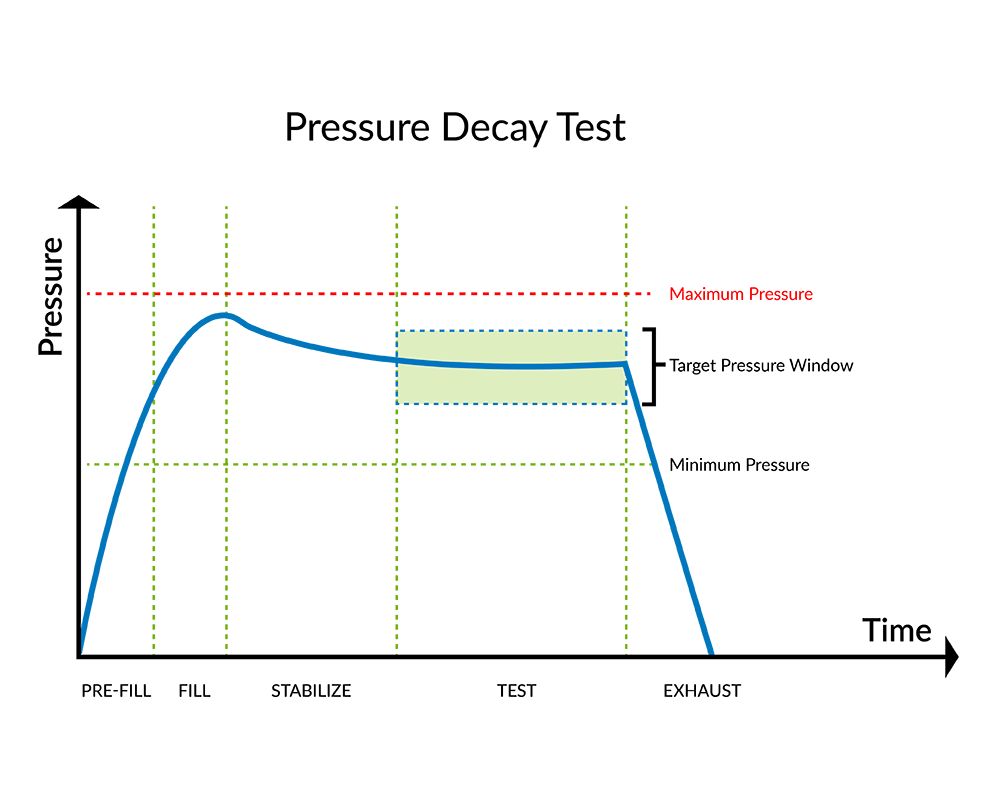- Applications with very low leak rates
- Stable parts with no volume difference part to part
- Measurable specification when converting from dunk testing to pressure decay testing
Leak Testing Using Pressure Decay - dP and dP/dT
The Pressure Decay test dP and dP/dT determines pressure loss measured over a fixed time and is presented as the amount of pressure change within the test part volume . The basic operation of a pressure decay test is to fill the test part to a specified target test pressure, isolate the test part circuit from the pressure source, stabilize the pressure and test part, then measure the pressure loss over a defined test time.

Pressure Decay dP and dP/dT Testing is typically used for:
How the Pressure Decay dP and dP/dT Leak Test Works
The pressure decay dP and dP/dT test results provide a delta pressure loss as the result of a leak and is reported as dP or dP/dT. The dP test reports the ‘pressure drop’ for the full test time. The dP/dT test measures the pressure drop and reports the ‘calculated pressure drop’ identified as a pressure loss per one second.
Example: dP and dP/dT test results
| dP Test | |
| Test time | = 10 sec |
| Measured leak | = 1.0 psig |
| Pressure drop | = 1 psig in 10 seconds |
| dP/dT Test | |
| Test time | = 10 sec |
| Measured leak | = 1.0 psig |
| Pressure drop | 1.0 psig / 10 sec = 0.1 psig per second |
As standard, the pressure decay leak test methods can be performed with pressure (P) or vacuum (V) and results identified as dP, dV, dP/dT, or dV/dT.
See if this is the right test method for you.
Watch Video
The Effects of Part Volume on a Pressure Decay Leak Test.
Talk to Us about Your Pressure Decay Leak Test
Get in touch with us today to learn more about any of how our standard leak test instruments or custom-engineered leak test solutions can work for you.
